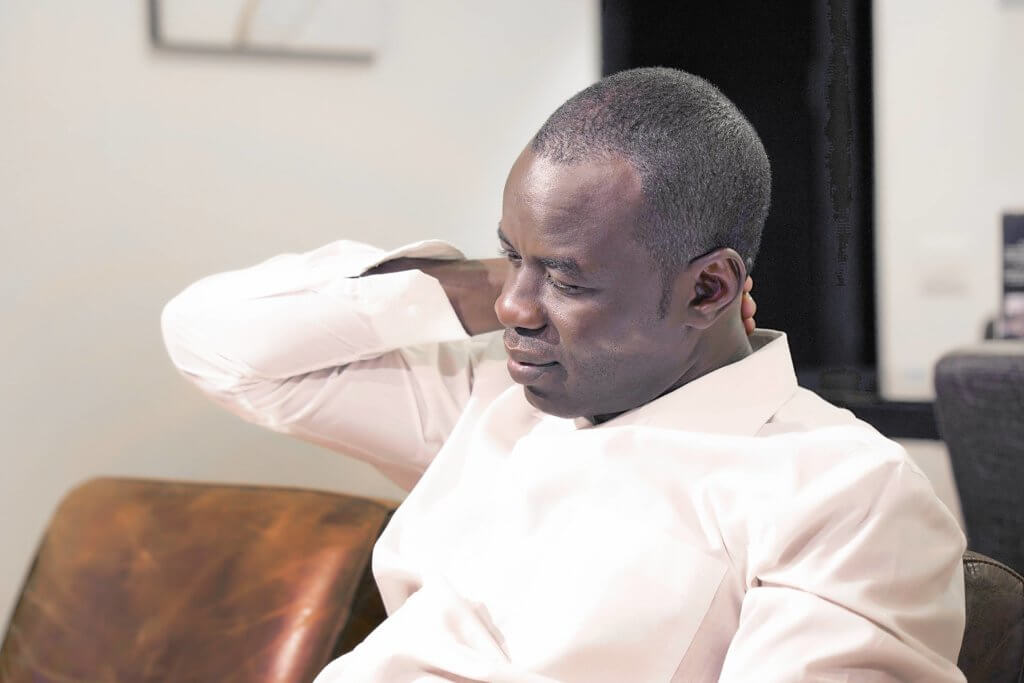Spine Surgery for Any Type of Pain
 Whether you have trauma from a fall or auto accident, or a degenerative condition caused by age, arthritis, scoliosis, or another disease, the resulting back pain can be debilitating and disrupt your life. Waiting too long to seek treatment will only worsen it, and can potentially permanently affect your mobility and quality of life.
Whether you have trauma from a fall or auto accident, or a degenerative condition caused by age, arthritis, scoliosis, or another disease, the resulting back pain can be debilitating and disrupt your life. Waiting too long to seek treatment will only worsen it, and can potentially permanently affect your mobility and quality of life.
Regardless of the type of pain you are experiencing, you can get help from South Island Orthopedics. SIO is home to some of the leading spinal surgeons, and some of the most advanced treatment options on Long Island. Our team will put their extensive experience in treating spinal injuries and spine conditions to work for you, easing your pain and getting you back to doing the things you love.
South Island’s Options For Spine Care
SIO’s team is committed to providing back pain relief without surgery when possible. They use multiple methods to reach an accurate diagnosis and treatment plan, including physical, imaging, and neurological exams.
Depending on the results of the evaluation, the treatment plan may include:
- Medication to reduce pain and/or nerve damage
- Immobilization
- Spinal surgeries, including spinal fusions and spinal decompression
- Physical therapy
If spine surgery is recommended to ease pain, you can expect the most advanced, least invasive surgical method possible. Every patient and situation is different, so read on to learn more about what you can expect from spine care at SIO.
Spine Surgery At South Island Orthopedics

No matter the type of pain you have or its cause, if you need surgery, you can trust South Island Orthopedics. Our team of orthopedic surgeons includes Dr. Franklin Lee, a spine surgery specialist with experience in minimally invasive and robot-assisted procedures, as well Dr. David Godfried, a pediatric orthopedic specialist who provides surgical treatment for scoliosis in children and teens.
Because the cause and type of pain you’re experiencing determines your specific treatment plan, SIO offers multiple spine surgery options.
Laminectomy
The most common surgical option for spinal stenosis (a narrowing of the spinal cord which puts pressure on nearby nerves), a laminectomy widens the spinal canal by removing parts of bone, bone spurs, or excess tissue. This alleviates the pressure, effectively reducing pain and weakness. Laminectomies are most often performed on the lumbar or lower spine.
Discectomy
A discectomy aims to eliminate the type of pain caused by a herniated, ruptured, or slipped disc. Discs are rubbery cushions filled with a gel-like substance that serve as shock absorbers between the vertebrae. Age-related deterioration or injury can damage discs, causing them to slip out of place or bulge, also known as a herniated disc. This damage puts pressure on nearby nerves, and causes pain, weakness, and numbness in the extremities.
A discectomy removes some or all of the affected disc. There are several approaches to this procedure, both minimally invasive and open. The best option for you depends on the extent of the damage, and whether your surgeon opts for additional surgical procedures at the same time.
Spinal Fusion
Often paired with a discectomy, a spinal fusion involves fusing two vertebrae after removing a disc. Screws and rods support the bones to fuse as they heal, or the surgeon uses grafts of bone from another part of the body. Spinal fusions are typically recommended when a degenerative condition causes chronic, nonspecific pain.
Foraminotomy
Another surgery commonly performed in conjunction with a spinal fusion, a foraminotomy, relieves pain from a compressed nerve by removing bone at the sides of the vertebrae. Removing bone creates more room where nerves exit the spine, alleviating discomfort. However, because it can create instability in the spine, a spinal fusion may be necessary for strength.
Disc Replacement
An alternative to spinal fusion, this procedure allows the surgeon to remove a damaged spinal disc, and replace it with an artificial one. An artificial disc shortens recovery time, and preserves the full range of motion in the spine.
Interlaminar Implant
A less invasive alternative to a laminectomy or spinal fusion, an interlaminar implant is a U-shaped device inserted between two lumbar vertebrae. The implants eases pressure on the nerves and alleviates pain, preserving almost all the normal range of motion.
Facetectomy
Every vertebra has four facets, protrusions that connect the bones. Spinal nerves pass through these joints to other body parts, provide spinal stability, and allow the spine to bend and twist. When the joints can become misaligned, they put pressure on the nerves, causing severe pain. A facetectomy removes a small amount of the facet bone to relieve this pressure.
Scoliosis Spine Surgery at South Island Orthopedics

Often, doctors take a “wait and see” approach to treating scoliosis, only recommending treatment like bracing when the spinal curve worsens. Still, some younger patients need surgery to correct the curvature or prevent it from getting worse. At SIO, Dr. Godfried works with pediatric patients to perform two primary types of scoliosis surgery.
Spinal fusion. The advanced surgical approach and materials used by Dr. Godfried and his team ensure that the spinal joints grow together and form a solid bone, reducing curvature. Dr. Godfried uses innovative techniques that allow fewer vertebrae to be fused, preserving mobility and speeding recovery time.
The best age for scoliosis surgery involving spinal fusion is at least 10 years old for girls, and 12 years old for boys. Most surgeons wait until the patient is in their teens.
Growing systems. Typically performed to delay spinal fusion, this type of surgery involves anchoring rods to the spine to help correct and maintain the spine’s curvature while the child grows. The drawback to this method is that it requires additional surgeries every 6 to 12 months to keep up with the spine’s growth. However, once patients are fully grown, they’ll undergo spinal fusion to keep the joints in place.
The advantage of a growth system is that the patient doesn’t have a spinal fusion that thwarts lung development and causes the trunk to remain unusually short. It keeps the spinal curvature from worsening until a spinal fusion is appropriate.
Care for Any Type of Pain at SIO
South Island Orthopedic is proud to be a leading provider of orthopedic care for anyone living on the North or South Shore of Long Island, in neighboring Queens, or anywhere in between. Thanks to our partnerships with local surgical centers and hospitals, you can take comfort knowing you will receive care close to home, and have access to the most advanced minimally-invasive procedures, robotic technology, and experienced surgeons.
If you need spine care, contact us today and experience the standard in the best orthopedic care.
